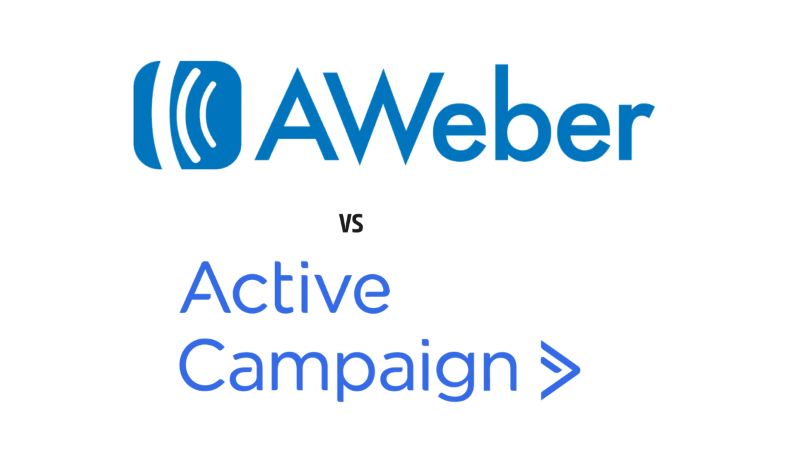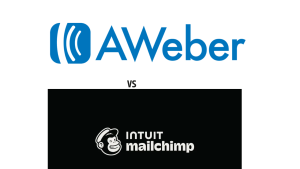In the fierce battle of Aweber vs Active Campaign, choosing the right email marketing platform for your needs can be daunting. Both contenders offer robust features, but which one aligns best with your goals? Dive into our comprehensive comparison to discover each platform’s strengths, nuances, and unique offerings, helping you make an informed decision for your business’s success.
Pricing Structures: Aweber vs Active Campaign
When diving into email marketing tools, understanding the pricing structures is paramount for businesses of all sizes. In the debate of Aweber vs. Active Campaign, cost often plays a significant role in decision-making.
Aweber’s Pricing Model
Aweber traditionally offers a straightforward pricing model. It’s typically based on the number of subscribers you have, which means as your list grows, you might find yourself moving to a higher pricing tier. Their pricing starts at a certain fee for up to a specific number of subscribers and gradually increases as your list expands.

Active Campaign’s Pricing Tiers
Active Campaign, on the other hand, has a multi-tiered approach. They provide packages like Lite, Plus, Professional, and Enterprise. Each tier offers a set of features, and the cost varies based on the number of subscribers and the functionalities you access. For example, CRM integration, advanced automation, or even training might be exclusive to higher tiers.
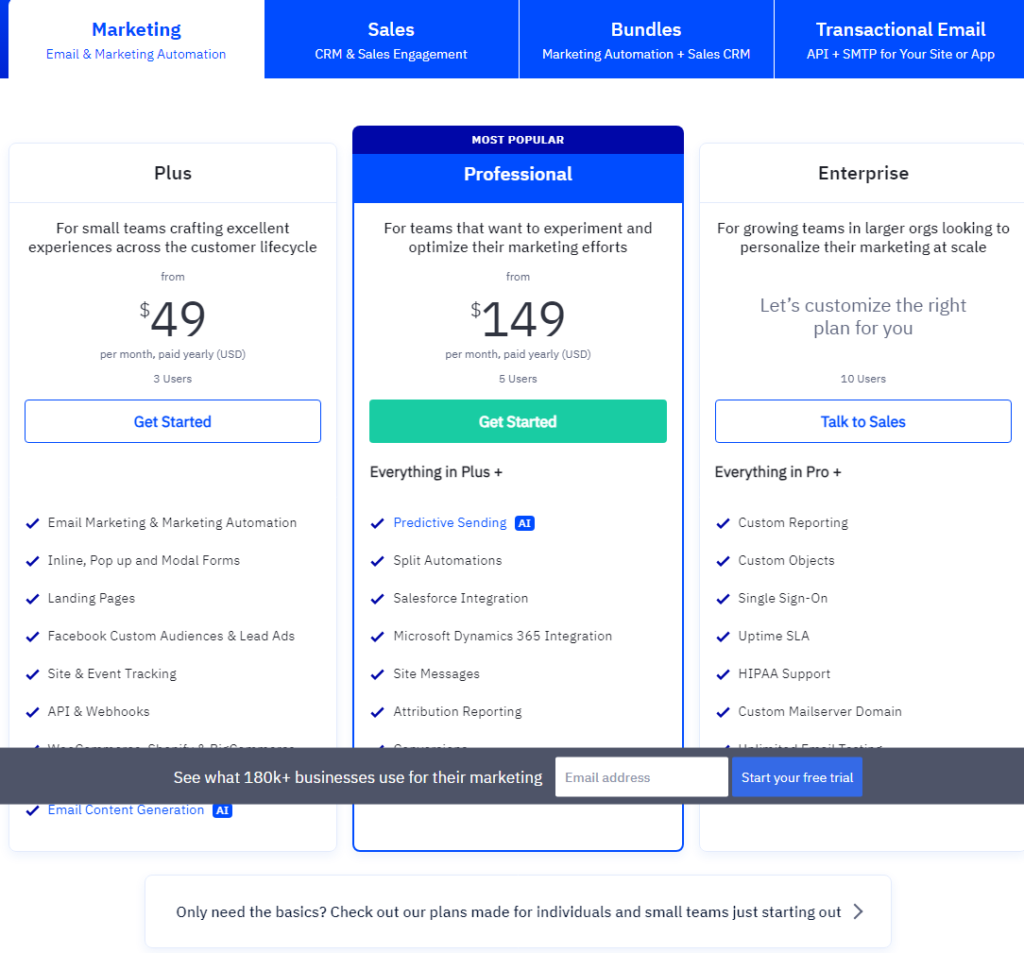
Cost-Effectiveness
The real question isn’t just about the raw numbers but the value delivered for those prices. With Aweber vs Active Campaign, weighing what features you need against the monthly or annual fee is essential. A smaller business might find Aweber’s simplicity and direct pricing more appealing. In contrast, a larger enterprise or a rapidly growing startup might see the versatility and scalability of Active Campaign’s tiered approach as a more fitting investment.
In conclusion, when evaluating the pricing structures of Aweber vs Active Campaign, it’s crucial to look at the dollar amount and understand the breadth and depth of features and potential growth pathways each platform offers for the price you pay.
User Experience and Interface: Aweber Vs Active Campaign
Choosing the right email marketing tool goes beyond price; user experience and interface play a pivotal role in determining the platform’s efficiency and ease of use. In the Aweber vs Active Campaign showdown, let’s delve into these aspects to uncover which tool is on top.
Aweber’s Interface
Aweber boasts a clean and intuitive interface designed with simplicity in mind. Their dashboard is straightforward, ensuring even the most novice users can easily navigate. The drag-and-drop editor, campaign overview, and subscriber insights are all organised, ensuring tasks are executed without hassle.
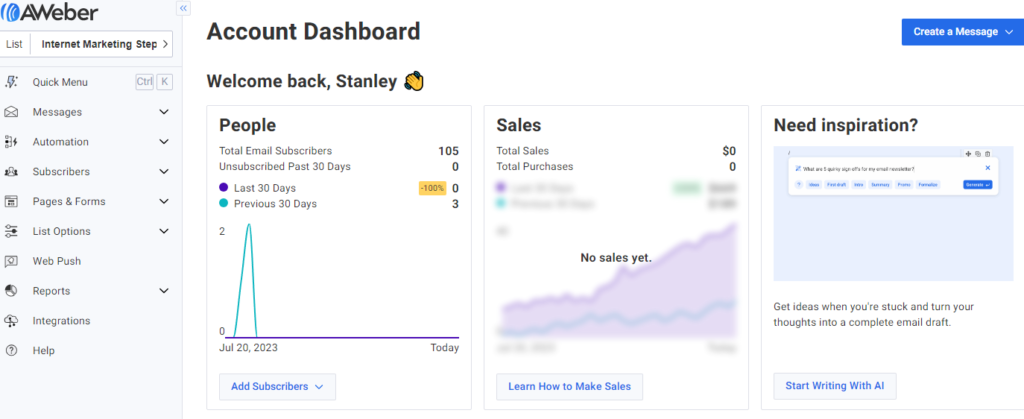
Active Campaign’s User Experience
While packed with more advanced features, Active Campaign has ensured its platform remains user-friendly. The dashboard presents a more holistic view of campaigns, automation, and contacts. Their design approach, with guided tours and tooltips, aids users in understanding each section and its functionalities, making the learning curve smoother.
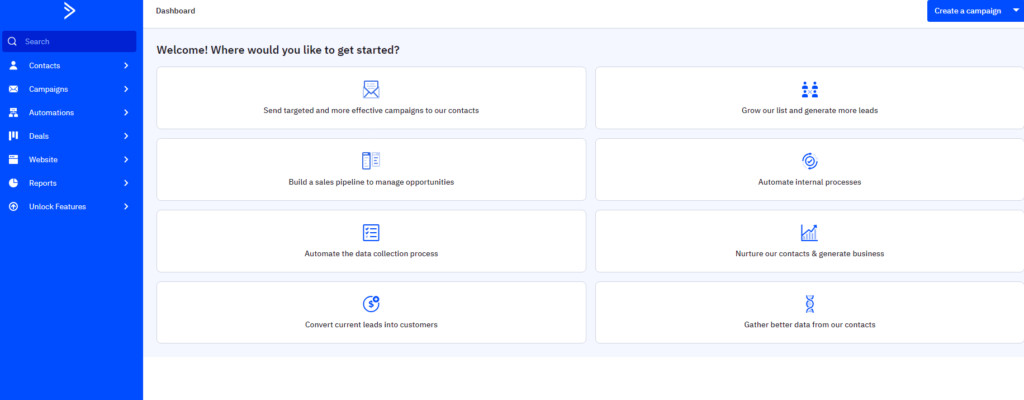
Customization and Personalization
When comparing Aweber vs Active Campaign in terms of customization, it’s evident that both platforms offer a certain degree of adaptability. Aweber provides customizable templates and a flexible email editor catering to brands looking to maintain their unique identity. On the other hand, Active Campaign dives deeper, allowing users to customize their dashboard view, catering to individual preferences and ensuring frequently used tools are easily accessible.
Efficiency and Workflow
Efficiency is crucial for any business tool. With its simple layout, Aweber ensures quick task execution, be it crafting an email or viewing subscriber stats. With its multifaceted features, Active Campaign provides efficient workflow structures, especially in automation and CRM integration, allowing users to handle complex tasks seamlessly.
To wrap up, both Aweber and Active Campaign offer commendable user experiences, each with its strengths. Whether you prefer Aweber’s simplicity or Active Campaign’s comprehensive nature, the decision boils down to your business needs and personal interface preferences.
Email Template Variety: Aweber Vs Active Campaign
Crafting engaging emails is both an art and a science. The design is as crucial as the content. Thus, the variety of email templates a platform offers can significantly impact the effectiveness of your campaigns. In the Aweber vs Active Campaign face-off, let’s determine which platform offers a more diverse and customizable set of templates.
Aweber’s Email Template Selection
Aweber is renowned for its vast collection of pre-designed templates. Catering to various industries and occasions, from newsletters to promotional campaigns, their range ensures businesses find a match for their specific needs. The templates are numerous and visually appealing, ensuring that brands can make a lasting impression.

Active Campaign’s Template Offerings
Active Campaign’s strength lies in the flexibility of its templates. While they might not have as extensive a collection as Aweber, the available designs are modern, responsive, and highly customizable. Active Campaign focuses on adaptability, ensuring businesses can tweak templates to align perfectly with their brand identity.

Customization and Flexibility
When dissecting Aweber vs. Active Campaign on customization fronts, both platforms stand out, albeit differently. Aweber offers a user-friendly drag-and-drop editor, enabling users to make changes without design expertise. Active Campaign, in contrast, provides more granular customization options, which might appeal to users who wish to dive deeper into design intricacies.
Mobile Responsiveness
In today’s mobile-first world, ensuring emails look impeccable on smartphones and tablets is non-negotiable. Both Aweber and Active Campaign recognize this, offering mobile-responsive templates. However, before sending, previewing and testing designs across various devices is always a good practice.
Conclusively, while Aweber and Active Campaign both present commendable email template options, your choice might boil down to preference: a wider variety or deeper customization. Either way, both platforms ensure your emails resonate with recipients and align with your brand ethos.
Automation Features: Aweber Vs Active Campaign
Automation has revolutionized email marketing from segmenting subscribers to sending out targeted campaigns; automation streamlines processes and enhances efficiency. In our continued comparison of Aweber vs Active Campaign, let’s explore which platform takes the lead in offering robust automation features.
Aweber’s Automation Capabilities
Aweber introduces users to automation with its ‘Campaigns’ feature. Users can easily design trigger email sequences based on specific actions, such as sign-ups or link clicks. Moreover, Aweber’s autoresponder is reliable, ensuring that your emails reach subscribers at your desired time, irrespective of their time zone.

Active Campaign’s Automation Suite
Active Campaign prides itself on its advanced automation infrastructure. Users can craft intricate workflows that cater to specific audience behaviours with a visual automation builder. From lead scoring to branching logic and site tracking, Active Campaign’s comprehensive automation tools enable businesses to nurture leads effectively and optimize conversions.

Segmentation and Targeting
In the realm of Aweber vs Active Campaign, segmentation capabilities become pivotal. Aweber offers basic segmentation, allowing you to group subscribers based on their actions or profile data. Active Campaign, however, delves deeper. Its dynamic segmentation adjusts lists in real-time based on user behaviour, ensuring a higher degree of campaign personalisation.
Multichannel Automation
Beyond just email, Active Campaign stands out in integrating SMS and site messages into its automation workflows. This multichannel approach ensures businesses can interact with their audience across different touchpoints, enhancing the user experience.
Ease of Use
While Active Campaign offers a more detailed automation suite, it may have a steeper learning curve for beginners. With its more straightforward approach, Aweber can be easier for those new to email marketing automation.
Integration Capabilities: Aweber Vs Active Campaign
The true potential of an email marketing tool often hinges on its ability to integrate with other platforms and tools seamlessly. This not only augments functionality but also streamlines operations. In the Aweber vs Active Campaign discussion, let’s delve into the integration landscapes of these platforms to ascertain which offers a more versatile ecosystem.
Aweber’s Integration Ecosystem
Aweber has consistently worked towards expanding its integration repertoire. Today, it can be connected with many platforms, from e-commerce solutions like Shopify and WooCommerce to CRM tools like Salesforce. Its app directory showcases various integrations, allowing businesses to link their email marketing with other essential tools seamlessly.
Active Campaign’s Integration Landscape
Active Campaign emerges as a powerhouse when it comes to integrations. Their vast ecosystem encompasses over 300 apps and platforms, from e-commerce and payment gateways to website builders and analytics tools. The platform’s emphasis on CRM also ensures it melds well with sales and lead-generation tools.
Web Tracking and Analytics
One standout feature when discussing Aweber vs Active Campaign is the latter’s robust web tracking capabilities, especially when integrated with analytics platforms. This facilitates a more in-depth understanding of subscriber behaviours and preferences. While offering basic tracking, Aweber might not delve as deep into the analytical sphere as Active Campaign.
E-commerce Integration
Both platforms recognize the burgeoning e-commerce sector. Active Campaign offers robust integrations with popular platforms like Shopify, BigCommerce, and WooCommerce, facilitating automated cart abandonment campaigns and customer segmentation. Aweber, not to be left behind, also provides e-commerce integrations, albeit with a more streamlined approach.
Ease of Setup
When considering integration, ease of setup is crucial. Aweber and Active Campaign offer guided processes for most integrations, ensuring even those less tech-savvy can connect tools without a hitch.
In essence, both Aweber and Active Campaign offer diverse integrations, catering to businesses of all types and sizes. Your choice would hinge on specific needs: whether you’re looking for a vast ecosystem or targeted, streamlined integrations.
Weaving through Aweber vs Active Campaign through the lens of integration capabilities provides a comprehensive perspective. By infusing the content with the suggested images, readers are granted a more illustrative, informed view of what each platform brings.
Deliverability Rates
In email marketing, even the most meticulously crafted campaigns can fall short if they don’t reach the recipient’s inbox. Deliverability rates, hence, become a cornerstone metric. Let’s gauge how Aweber vs. Active Campaign ensures your emails aren’t lost in the ether.
Understanding Deliverability
Before diving into the specifics, it’s crucial to understand what deliverability means. In essence, it’s the ability of an email to land in the recipient’s inbox and not be flagged as spam or junk. Factors affecting this include sender reputation, email content, and recipient engagement.
Aweber’s Deliverability Record
Aweber boasts a robust infrastructure focused on maximizing deliverability. Their dedicated team regularly monitors servers and maintains relationships with major ISPs (Internet Service Providers) to ensure emails consistently reach inboxes. With a proven track record, Aweber consistently ranks high in independent deliverability tests.
Active Campaign’s Deliverability Prowess
Active Campaign isn’t far behind. Their platform features advanced deliverability tools, including predictive sending and domain authentication. Like Aweber, Active Campaign’s team also engages with ISPs and follows best practices to ensure optimum deliverability. Users can leverage in-built testing tools to gauge how their emails will fare before sending.
ISP Relationships and Domain Reputation
When evaluating Aweber vs. Active Campaign, the relationships both platforms foster with ISPs are paramount. Both invest in nurturing these ties to aid seamless email delivery. Additionally, domain reputation, which hinges on user behaviour and email content, is monitored and optimized to enhance deliverability further.
Tools and Analytics
Both platforms provide users with tools to optimize their campaigns for better deliverability. Features like spam score assessments, content previews across various email clients, and detailed analytics on bounces and engagement help marketers refine their strategies.
To conclude, Aweber and Active Campaign prioritize deliverability, understanding its pivotal role in successful email marketing. While rates can vary based on numerous factors, choosing a platform with a strong focus on deliverability ensures your campaigns have the best chance to shine.
Reporting and Analytics Depth
Data is the lifeblood of modern marketing. The ability to gather, analyze, and act upon insights separates successful campaigns. When considering Aweber vs. Active Campaign, how deep do their analytical waters run? Let’s dive in.
Understanding the Value of Data
In email marketing, every click, opening, and conversion carries weight. Comprehensive reporting gives marketers a clearer picture of campaign performance, enabling strategic adjustments and informed decisions.
Aweber’s Reporting Suite
Aweber offers a robust set of analytics tools that present data in a clear and digestible manner. Users can gain insights into open, click-through, and bounce rates. Additionally, their visual reports make it easy to spot trends, subscriber activity, and areas for improvement.
Active Campaign’s Analytical Power
Active Campaign takes reporting a step further. Apart from the standard metrics, it offers granular insights such as geo-tracking, individual subscriber profiles, and machine learning-driven predictions. Their advanced segmentation also allows more profound insights into data subsets, helping marketers pinpoint specific audience behaviours.
Automation Reporting
Understanding how each platform reports on automation is vital in the Aweber vs Active Campaign debate. While Aweber provides insights on sequence performance and engagement, Active Campaign delves deeper, visualising automation workflows, performance bottlenecks, and conversion paths.
Integration with External Tools
Both platforms can integrate with external analytics tools like Google Analytics, allowing marketers to marry email data with broader website and conversion metrics. This provides a 360-degree view of the customer journey, from email clicks to website conversion.
Ease of Interpretation
Analytics are only as valuable as their clarity. Both platforms prioritize user-friendly interfaces, with Active Campaign leaning towards a more detailed and intricate dashboard catering to data enthusiasts. On the other hand, Aweber focuses on simplicity, making it easier for newcomers to decipher insights.
In the final analysis, both Aweber and Active Campaign recognize the paramount importance of data in shaping successful email campaigns. Your choice would hinge on your data appetite: straightforward insights or deep, multifaceted analytical dives.
Subscriber and List Management: Aweber Vs Active Campaign
One of the foundational elements of effective email marketing lies in proficient subscriber and list management. After all, even the most compelling content falls flat if not directed to the right audience. In the context of Aweber vs Active Campaign, let’s explore how each platform empowers marketers in managing their most valuable asset: their subscribers.
The Importance of Organized Lists
Well-segmented and organized lists ensure that emails are tailored, relevant, and timely. This enhances engagement, reduces unsubscribe rates, and elevates overall campaign efficacy.
Aweber’s Subscriber Management
Aweber offers a straightforward approach to list management. Users can easily import subscribers, segment them based on criteria like behaviour or location, and even tag them for personalized campaigns. Their simple interface ensures even beginners can manage and grow their lists without a steep learning curve.
Active Campaign’s List Mastery
Active Campaign amplifies list management with advanced segmentation capabilities. Beyond standard criteria, users can segment subscribers based on intricate automation responses, past interactions, and predicted future behaviours. This allows for hyper-targeted campaigns that resonate personally with each subscriber.
Automation and List Health
When considering Aweber vs. Active Campaign, it’s worth noting how each platform uses automation to maintain list health. Both platforms can automate tasks like cleaning inactive subscribers or segmenting based on engagement metrics. This proactive approach ensures lists remain fresh, engaged, and responsive.
Subscriber Profiling
Active Campaign’s comprehensive subscriber profiles document each individual’s journey and interactions. While not as exhaustive, Aweber provides essential data, ensuring marketers understand subscriber preferences at a glance.
GDPR and Compliance Tools
Aweber and Active Campaign offer tools to ensure marketers adhere to regulations like GDPR. Features like easy unsubscribe options, consent records, and data access tools ensure that campaigns remain compliant and transparent.
Both platforms provide robust tools to manage and optimize subscriber lists, though with varying depths and complexities. Whether you prefer Aweber’s user-friendly simplicity or the granular precision of Active Campaign, effective list management remains at your fingertips.
Customer Support and Assistance
In the dynamic world of email marketing, challenges can emerge unexpectedly. Whether you’re a novice grappling with the basics or a seasoned marketer facing a technical glitch, having reliable customer support can be a game-changer. In comparing Aweber vs Active Campaign, let’s delve into each customer support structure and determine which offers more peace of mind.
Why Support Matters
The potency of customer support isn’t just about resolving issues; it’s about ensuring continuity, building trust, and fostering growth. A reliable support system can drastically reduce downtime, mitigate potential losses, and enhance user satisfaction.
Aweber’s Support Network
Aweber prides itself on its award-winning 24/7 customer support. Users can expect prompt and knowledgeable assistance via live chat, email, or phone. Their extensive library of tutorials, webinars, and knowledge-base articles further ensures that users have a wealth of self-help resources.
Active Campaign’s Assistance Framework
Active Campaign, while not offering round-the-clock support, compensates with the depth of its assistance. Their support encompasses live chat, email, and a detailed knowledge base. Users can opt for one-on-one training sessions for more intricate issues or personalized guidance, albeit at an additional cost.
Community and Peer Support
Delving further into Aweber vs Active Campaign reveals that both platforms harness the power of their user communities. Dedicated forums and community groups offer peer-to-peer assistance, allowing users to share experiences, solutions, and innovative use cases.
Onboarding and Training
Practical support isn’t just reactive; it’s proactive. Both platforms offer onboarding assistance to ease new users into the system. While Aweber leans towards interactive guides and walkthroughs, Active Campaign boasts a comprehensive library of training videos and webinars to fast-track proficiency.
Feedback and Continuous Improvement
Aweber and Active Campaign emphasize user feedback in refining their platforms and support structures. Regular surveys, feedback sessions, and open channels for suggestions ensure that their support evolves in tandem with user needs.
In conclusion, both platforms recognize the indispensable role of customer support in the user journey. Whether you value 24/7 availability as with Aweber or depth and personalized training sessions as with Active Campaign, both platforms prioritize user assistance and growth.
Final Verdict: Aweber Vs Active Campaign
The digital arena of email marketing is teeming with tools, each promising unparalleled efficacy. Yet, the decision isn’t black and white when the spotlight falls on Aweber vs. Active Campaign. Each platform offers its unique strengths, tailored to distinct needs. So, how do you choose between the two? Let’s distil our findings and reach a conclusion.
A Reflection on Strengths
- Aweber: Known for its user-friendly interface, 24/7 customer support, and straightforward pricing structure, Aweber is an excellent choice for those new to email marketing or those who prefer a no-fuss, efficient approach.
- Active Campaign: With advanced automation capabilities, in-depth analytics, and hyper-targeted segmentation options, Active Campaign is the go-to for seasoned marketers seeking granular control and optimization.
Consider Your Needs
Your decision should pivot to your specific requirements. If you’re seeking simplicity, swift onboarding, and consistent support, Aweber might be your best bet. On the other hand, if you crave advanced features, data-driven insights, and personalization at scale, Active Campaign emerges as the front-runner.
Budgetary Constraints
Budget often plays a pivotal role in such decisions. If you’re working within tight financial confines, evaluate the ROI each platform can deliver. While Aweber offers straightforward pricing, Active Campaign’s advanced features might justify its potentially higher costs, especially for large-scale operations.
Looking Ahead
Consider not just where you are now but where you aim to be. Both platforms offer scalability, but their trajectories differ. Aweber ensures consistent, hassle-free growth, while Active Campaign’s advanced features can be more rewarding as your operations expand and mature.
In Conclusion
The debate of Aweber vs. Active Campaign isn’t about determining a clear winner. It’s about aligning with a platform that resonates with your goals, budget, and future aspirations. By reflecting on the insights shared and evaluating your unique needs, you’re poised to make an informed choice that will empower your email marketing endeavour.
Conclusion
Navigating the intricate landscape of email marketing tools can often feel overwhelming. With each platform touting its unique offerings, the selection process becomes less about features and more about alignment with your goals. Our in-depth comparison of Aweber vs Active Campaign aimed to shed light on this very aspect, allowing you to make an informed decision based on your specific needs and aspirations.
Both platforms stand out in their respective domains, with Aweber catering brilliantly to those seeking simplicity and reliability. At the same time, Active Campaign appeals to those hungry for data-driven strategies and advanced functionalities. As with many tools in the digital world, there isn’t a one-size-fits-all answer. Instead, the ideal solution complements your business model, budget, and growth trajectory.
We hope you feel empowered and informed as we wrap up this comprehensive exploration. Remember, the ultimate goal is to connect meaningfully with your audience, nurture relationships, and drive results. Whether you choose Aweber or Active Campaign, the foundation remains: crafting authentic, compelling narratives that resonate with your subscribers. With the insights from this comparison in your arsenal, you’re well on your way to email marketing success.
Thank you for journeying with us through this comparison. We wish you every success in your email marketing endeavours and beyond!
Some links in this article may be affiliate links, meaning they could generate compensation to us without any additional cost to you should you choose to purchase a paid plan. These are products we have personally used and confidently endorse. It’s important to note that this website does not offer financial advice. You can review our affiliate disclosure in our privacy policy for more information.

